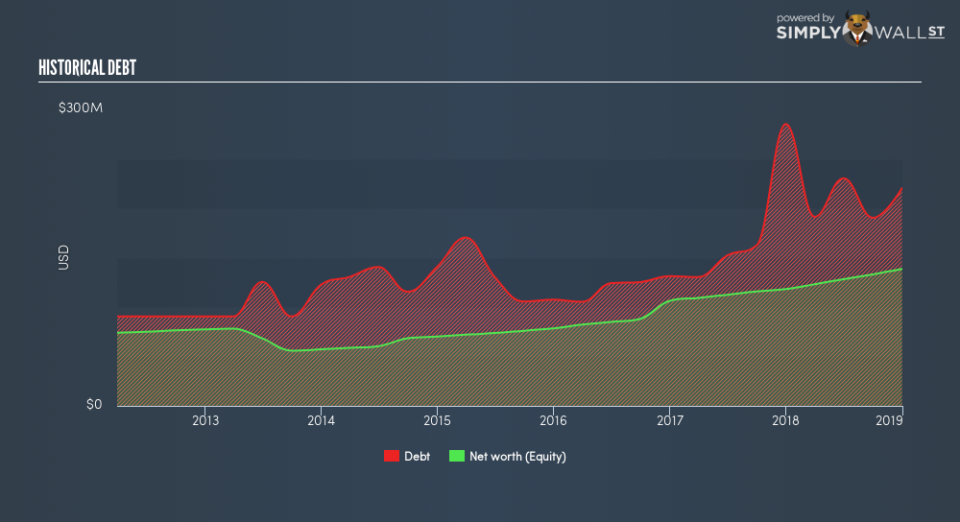Can Unity Bancorp, Inc. (NASDAQ:UNTY) Survive The Next Financial Crisis?

Want to participate in a short research study? Help shape the future of investing tools and receive a $20 prize!
Unity Bancorp, Inc.’s (NASDAQ:UNTY) profitability and risk are largely affected by the underlying economic growth for the region it operates in US given it is a small-cap stock with a market capitalisation of US$216m. A bank’s cash flow is directly impacted by economic growth as it is the main driver of deposit levels and demand for loans which it profits from. Following the Financial Crisis in 2008, a set of reforms termed Basel III was enforced to bolster risk management, regulation, and supervision in the financial services industry. These reforms target bank level regulation and aims to improve the banking sector’s ability to absorb shocks arising from economic stress which could expose financial institutions to vulnerabilities. Its financial position may weaken in an adverse macro event such as political instability which is why it is crucial to understand how well the bank manages its risks. Sufficient liquidity and low levels of leverage could place the bank in a safe place in case of unexpected macro headwinds. Today we will be measuring Unity Bancorp’s financial risk position by looking at three leverage and liquidity metrics.
See our latest analysis for Unity Bancorp
Is UNTY’s Leverage Level Appropriate?
Banks with low leverage are exposed to lower risks around their ability to repay debt. A bank’s leverage can be thought of as the amount of assets it holds compared to its own shareholders’ funds. While financial companies will always have some leverage for a sufficient capital buffer, Unity Bancorp’s leverage ratio of less than the suitable maximum level of 20x, at 11.4x, is considered to be very cautious and prudent. With assets 11.4 times equity, the banks has maintained a prudent level of its own fund relative to borrowed fund which places it in a strong position to pay back its debt in times of adverse events. If the bank needs to increase its debt levels to firm up its capital cushion, there is plenty of headroom to do so without deteriorating its financial position.
How Should We Measure UNTY’s Liquidity?


Since loans are relatively illiquid, we should know how much of Unity Bancorp’s total assets are comprised of these loans. Usually, they should not be higher than 70% of total assets, but its current level of 81% means the bank has obviously lent out 10.92% above the sensible upper limit. This indicates that revenue is dependent on this particular asset but also the bank is more likely to be exposed to default compared to its competitors with less loans.
What is UNTY’s Liquidity Discrepancy?
Banks operate by lending out its customers’ deposits as loans and charge a higher interest rate. These loans may be fixed term and often cannot be readily realized, yet customer deposits on the liability side must be paid on-demand and in short notice. The disparity between the immediacy of deposits compared to the illiquid nature of loans puts pressure on the bank’s financial position if an adverse event requires the bank to repay its depositors. Relative to the prudent industry loan to deposit level of 90%, Unity Bancorp’s ratio of over 106% is higher, which positions the bank in a risky spot given the adverse liquidity disparity between loan and deposit levels. Basically, for $1 of deposits with the bank, it lends out over $1 which is imprudent.
Next Steps:
Today, we’ve only explored one aspect of Unity Bancorp. However, as a potential stock investment, there are many more fundamentals you need to consider. I’ve put together three relevant factors you should further examine:
Future Outlook: What are well-informed industry analysts predicting for UNTY’s future growth? Take a look at our free research report of analyst consensus for UNTY’s outlook.
Valuation: What is UNTY worth today? Has the future growth potential already been factored into the price? The intrinsic value infographic in our free research report helps visualize whether UNTY is currently mispriced by the market.
Other High-Performing Stocks: Are there other stocks that provide better prospects with proven track records? Explore our free list of these great stocks here.
We aim to bring you long-term focused research analysis driven by fundamental data. Note that our analysis may not factor in the latest price-sensitive company announcements or qualitative material.
If you spot an error that warrants correction, please contact the editor at editorial-team@simplywallst.com. This article by Simply Wall St is general in nature. It does not constitute a recommendation to buy or sell any stock, and does not take account of your objectives, or your financial situation. Simply Wall St has no position in the stocks mentioned. On rare occasion, data errors may occur. Thank you for reading.

